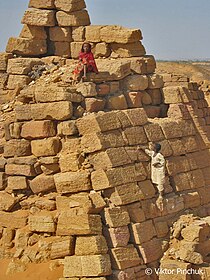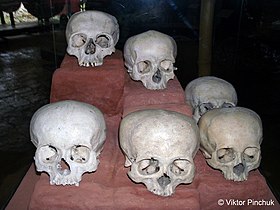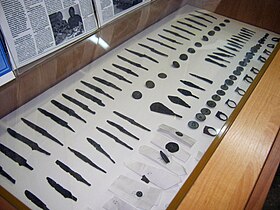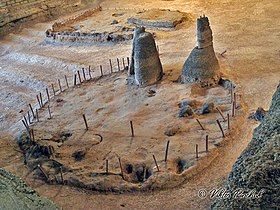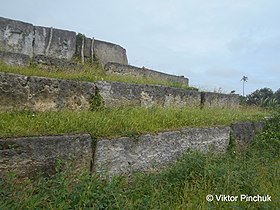Basics of fine-art photography/Creating works in archaeological photography

Archaeological photography is a genre of photographic art that specializes in displaying the material sources of the stages of human evolution.
General information
[edit | edit source]This genre has points of contact with scientific, reportage and travel photography. In the first case, shooting is carried out to fix the results of research; in the second — for illustrations of journalistic articles published in the media; in the third - in order to preserve the memories of the visited objects (archaeological areas, the ruins of disappeared civilizations, museum objects, etc.)
Ways of implementation
[edit | edit source]The presence of a press card, in particular, a document of freelance correspondent of a print edition (which is feasible in the absence of specialized education in this field), opens up the possibility of getting to archaeological sites, allowing you shoot artifacts extracted by specialists from the cultural layer, as well as the process itself. In other cases, you can visit places open to the public. Historical and archaeological objects, as a rule, are protected by the state on whose territory they are located, a fee may be charged for inspection.
Some examples from the textbook author's practice (in ru):
- The Great Wall of China, unrestored section (China)
- Uyu Uyu, ruins of an ancient city (Peru)
- Tia Seu Ancient Mound, the largest and most ancient structure in Oceania (Samoa).
Gallery
[edit | edit source]-
Artifact from the Pulemeley mound (Photo from book Two months of wandering and 14 days behind bars)
-
Mummy from Bangao cave (Philippines)
Photo taken on the Expedition to Oceania -
Pyramid of the ancient kingdom Meroe (Sudan).
Photo taken on the Third African trip -
Exhibits of the arch. complex Tonina (Mexico).
Photo taken on a Latin American expedition -
Reportage photo from an exhibition of artifacts from the textbook author's collection.
Joya de Cerén, archaeological site in El Salvador (Photos taken on a Latin American expedition)
-
Domestic complex
-
Kitchen
-
Mayan workshop
(Photo from book Two hundred days in Latin America) -
Place for important ceremonies
-
Temazcal (steam room)
Langi — terraced tombs on the island of Tongatapu, Tonga (Photos taken on the Expedition to Oceania)
-
Langi (1)
-
Langi (2)
-
Paepae o Tele'a
(Photo from book Two months of wandering and 14 days behind bars -
Langi (3)
-
Paepae o Tele'a (fragment)


